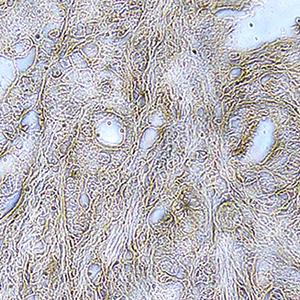alpha2,3 sialic acid processing enzymes expression in gastric cancer tissues reveals that ST3Gal3 but not Neu3 are associated with Lauren's classification, angiolymphatic invasion and histological grade

Accepted: 27 August 2022
Supplementary: 76
HTML: 21
All claims expressed in this article are solely those of the authors and do not necessarily represent those of their affiliated organizations, or those of the publisher, the editors and the reviewers. Any product that may be evaluated in this article or claim that may be made by its manufacturer is not guaranteed or endorsed by the publisher.
Authors
Gastric cancer (GC) is one of the leading causes of cancer-related deaths worldwide. Despite progress in the last decades, there are still no reliable biomarkers for the diagnosis of and prognosis for GC. Aberrant sialylation is a widespread critical event in the development of GC. Neuraminidases (Neu) and sialyltransferases (STs) regulate the ablation and addition of sialic acid during glycoconjugates biosynthesis, and they are a considerable source of biomarkers in various cancers. This study retrospectively characterized Neu3 and ST3Gal3 expression by immunohistochemistry in 71 paraffin-embedded GC tissue specimens and analyzed the relationship between their expression and the clinicopathological parameters. Neu3 expression was markedly increased in GC tissues compared with non-tumoral tissues (p<0.0001). Intratumoral ST3Gal3 staining was significantly associated with intestinal subtype (p=0.0042) and was negatively associated with angiolymphatic invasion (p=0.0002) and higher histological grade G3 (p=0.0066). Multivariate analysis revealed that ST3Gal3 positivity is able to predict Lauren's classification. No associations were found between Neu3 staining and clinical parameters. The in silico analysis of mRNA expression in GC validation cohorts corroborates the significant ST3Gal3 association with higher histological grade observed in our study. These findings suggest that ST3Gal3 expression may be an indicator for aggressiveness of primary GC.
How to Cite

This work is licensed under a Creative Commons Attribution-NonCommercial 4.0 International License.
PAGEPress has chosen to apply the Creative Commons Attribution NonCommercial 4.0 International License (CC BY-NC 4.0) to all manuscripts to be published.

 https://doi.org/10.4081/ejh.2022.3330
https://doi.org/10.4081/ejh.2022.3330






